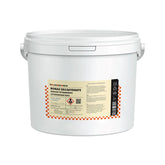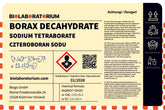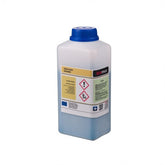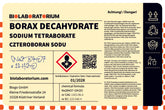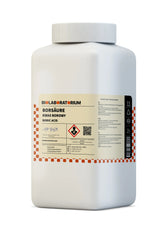Pyridine – Versatile Applications and Safety Aspects
Pyridine, a fascinating heterocyclic nitrogen compound, plays an important role in the chemical industry and research. With its unique molecular structure and diverse properties, pyridine finds numerous applications in various fields. In this blog post, we will take a closer look at the properties, industrial applications, and safety aspects of pyridine.
The Structure and Properties of Pyridine
Pyridine, with the chemical formula C5H5N, is an aromatic heterocycle consisting of a six-membered ring with one nitrogen atom. This structure gives pyridine unique physical and chemical properties. On one hand, pyridine is a weak base because the nitrogen atom has a lone electron pair that can accept protons. On the other hand, pyridine is also a weak solvent capable of dissolving both polar and non-polar compounds.
Pyridine is a colorless, flammable liquid at room temperature with a characteristic, unpleasant odor. It is highly soluble in water and most organic solvents. Due to its aromaticity, pyridine is relatively stable and can be handled under normal conditions without major problems.
Industrial Applications of Pyridine
Due to its diverse properties, pyridine finds numerous applications in industry. Here are some of the most important areas of use:
Chemical Synthesis
Pyridine serves as an important starting material for the production of a wide range of chemical compounds. For example, it is used in the synthesis of pharmaceuticals, dyes, pesticides, and other organic chemicals.
Solvent
Due to its solvent properties, pyridine is used as a solvent in the chemical industry. It is employed, among other things, in paint manufacturing, textile finishing, and the electronics industry.
Catalysts
Pyridine and its derivatives are used as catalysts in chemical reactions. They can increase reaction rates and improve selectivity.
Pharmaceuticals
In the pharmaceutical industry, pyridine serves as a starting material for the production of various medications, such as antidepressants, antihistamines, and anticancer drugs.
Agrochemicals
Pyridine-based compounds are used in the production of pesticides, fungicides, and other agrochemicals employed in agriculture.
Further Applications
Additionally, pyridine is also used in the rubber and tire industry, dye manufacturing, as well as in oil and gas extraction.
Safety Aspects in Handling Pyridine
Although pyridine is relatively stable under normal conditions, several safety aspects must be considered when handling it:
Health Risks
Pyridine is toxic and can be harmful if inhaled, swallowed, or upon skin contact. It can cause irritation to the eyes, respiratory tract, and skin. Long-term exposure can lead to damage to the liver and kidneys.
Fire Hazard
Pyridine is highly flammable and can cause fires when in contact with ignition sources or open flames. Therefore, strict safety measures must be followed when handling pyridine.
Environmental Impact
Pyridine is hazardous to water and can pollute the environment if disposed of improperly. Proper disposal and treatment of pyridine-containing waste is therefore essential.
To minimize risks, applicable occupational safety regulations and safety guidelines must always be followed when handling pyridine. This includes the use of protective equipment, good ventilation, and avoiding ignition sources. Additionally, employees in companies working with pyridine should be regularly trained and informed about the hazards.
Conclusion
Pyridine is a versatile and important chemical compound with numerous industrial applications. From pharmaceutical manufacturing to catalysis – pyridine plays a crucial role in modern chemistry. However, appropriate safety measures must be taken when handling pyridine to minimize health and environmental risks. Through responsible handling and continuous research, the benefits of pyridine can be optimally utilized.

